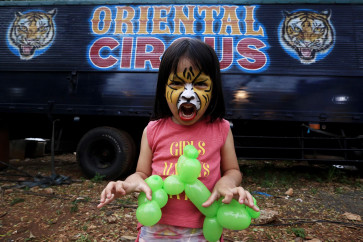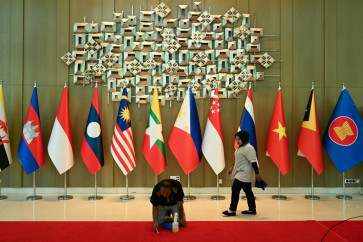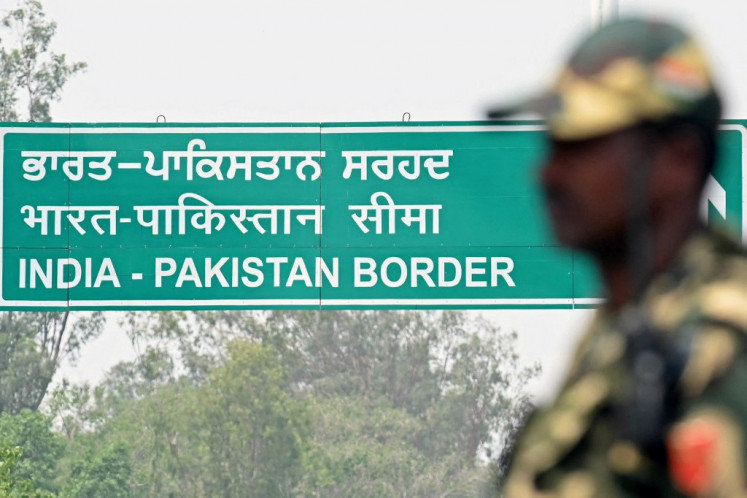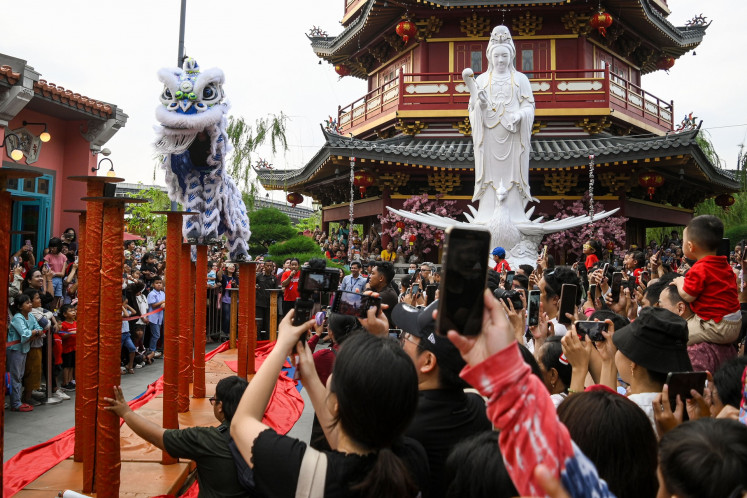Merapi victims buried en masse
Yogyakarta witnessed another mass burial on Sunday as the continuing eruptions of the Merapi volcano caused more flight disruptions
Change text size
Gift Premium Articles
to Anyone

Yogyakarta witnessed another mass burial on Sunday as the continuing eruptions of the Merapi volcano caused more flight disruptions.
Search and rescue teams struggled to evacuate survivors and the dead — sacrificing some of their own in the process. Reports said five volunteers died Sunday; three were killed by searing-hot ash clouds and two were buried in 3 meters of ash.
Residents still tried to slip by authorities through back roads to their homes within the 20-kilometer danger zone, insisting they had to feed their livestock.
While a few airlines said they would resume flights on Monday, exasperated crowds were seen at the Soekarno-Hatta International Airport as passengers were forced to rebook flights.
The visit of United States President Barack Obama was still on schedule as of Sunday even as experts were saying the Merapi eruptions were becoming increasingly unpredictable.
President Susilo Bambang Yu-dhoyono is scheduled to return to Jakarta on Monday after directly supervising the handling of the disaster in Yogyakarta.
Of the 88 victims of Friday’s eruption, 77 were buried in a mass funeral on Sunday at Beran public cemetery, Sleman district, in Yogyakarta.
“Of the bodies, only 43 could be identified,” said public relations officer Banu Hermawan from Dr. Sardjito General Hospital in Yogyakarta, where all the bodies were sent for identification.
With Friday’s eruption, the biggest ever for Merapi in the last century, the volcano has claimed 128 lives since it first began erupting on Oct. 26.
The death toll may increase as many of the villages destroyed by the speeding hot clouds of ash and lava could not yet be reached by the evacuation team as of Sunday due to threatening eruptions.
“We had entered Argomulyo subdistrict, Cangkringan, but only to run away again from the hot clouds so we had to leave our car behind,” an evacuation team member said.
The joint team comprising military and police personnel was also forced to stop evacuation efforts after arriving in Ngepringan village in Wukirsari subdistrict, Cangkringan, where they found four bodies.
To help transport the evacuation team through dangerous areas, the Indonesian Red Cross (PMI) on Sunday deployed two units of special vehicles in Cangkringan.
PMI chairman Jusuf Kalla expressed hope the organization could work with the military’s elite unit Kopassus in evacuating victims.
Energy and Mineral Resources Ministry’s geological agency head R. Sukhyar said the volcano’s explosive energy had been decreasing but the intensity of its activities was still high.
A column of hot clouds 6 kilometers high was seen spewing from Me-rapi at 3 a.m., indicating there was still plenty of magma inside the volcano.
The eruptions are estimated to have ejected more than 100 million cubic meters of volcanic material, creating a crater 400 meters wide at the peak of the volcano.
At the evacuation center in Maguwoharjo Stadium, Sleman, refugees had started to show signs of stress. A refugee identified as Joyo Sukadi was sent to Dr. Sardjito hospital with serious depression.
“Please forgive me. I want to see my house,” the man, who said he had just finished building his house, which was now destroyed by the volcano, cried repeatedly.
President Yudhoyono called on the refugees to follow the government’s instructions for their safety.
He asked people to be patient while the government did their best to secure the 283,000 refugees in the four affected regencies of Sleman in Yogyakarta and Magelang, Boyolali and Klaten in Central Java.
“Don’t forget to look after your health,” he said, shaking hands with some of the refugees.
Despite calls to evacuate homes, some residents in Boyolali villages chose to return home to either feed livestock or retrieve valuables.
Sahir, who lives 9 kilometers away from Mount Merapi, said he and his wife left their refugee camp in Ampel, Boyolali, every morning to feed their five cows at home.
“We spend around an hour to cut grass for [the cows],” he said.









